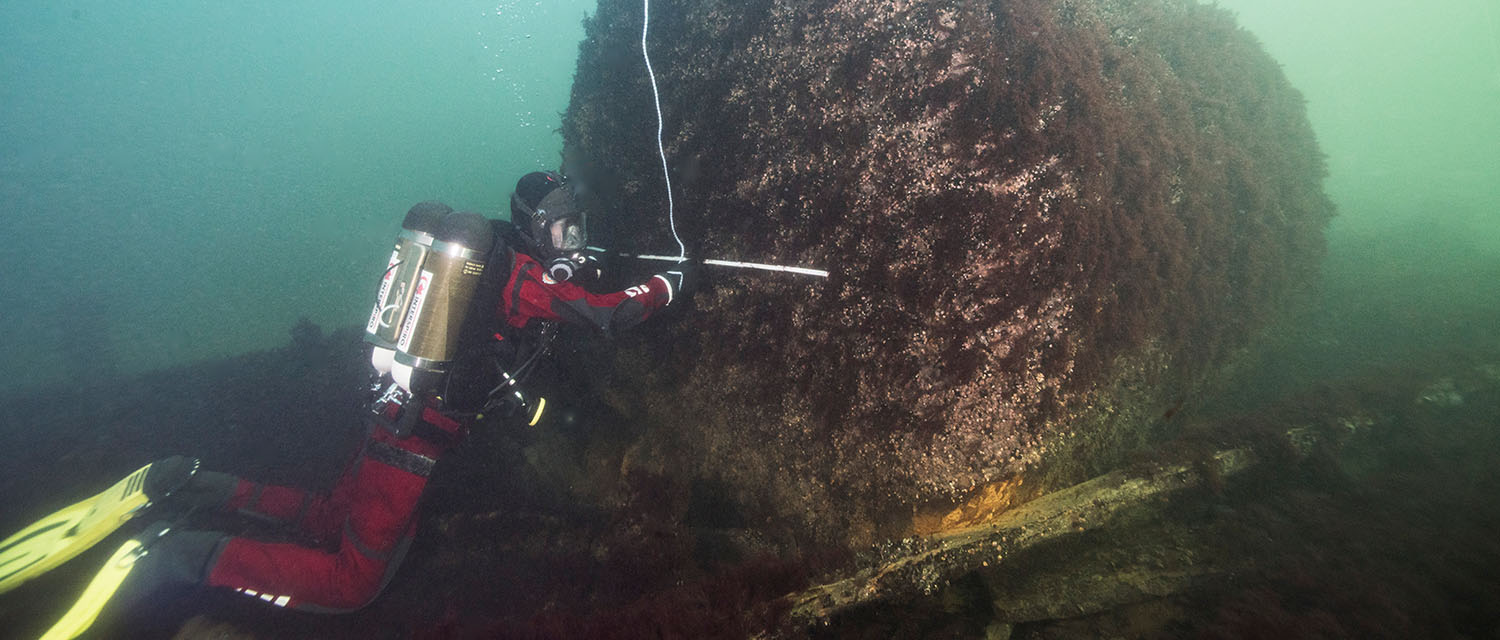On the morning of 14 December 1908, the steamship Baltic is homeward bound for Tjurkö, in the Karlskrona archipelago, after having delivered stones to Stettin in Poland. It’s windy and visibility is poor as the ship approaches the outer islands of the archipelago. Suddenly, land is sighted on the port side. The rudder is reset, but all too late – Baltic smashes into a rock and is badly damaged. The ship is abandoned and later sinks, ending its thirty years of service at Tjurkö’s stoneworks.
Facts
Deep: 3-8 metres
Build: 1872
Length: 38.6 metres
Width: 7 metres
Shipwreck: 1908
Ship type: Cargo steamship
Baltic was built in 1872 at the shipyard in Karlshamn. It was a so-called composite construction, with a wooden hull and a frame of iron. In 1878, Baltic was bought by Tjurkö stoneworks. At the time, demand for building stones, flagstones and kerbstones was considerable, especially in Germany where cities were growing rapidly.
Local recreational divers discovered the Baltic shipwreck as early as 1976, but it was not until autumn 2016 that archaeologists examined the remains.
During the more than 100 years that have passed since the sinking, iron fastenings and deck beams have been destroyed by rust. The hull has thus fallen out and lies flat on the seafloor. What divers most clearly encounter is the steam boiler with engine. These stand in the middle of the wreck, sticking up three metres towards the surface. Slightly farther away is the sternpost with propeller and the rudder, which is detached from the ship.
The construction of the composite ship Baltic bears witness to a transitional period in Swedish shipbuilding. But Baltic also tells a story about countless shipments across the Baltic Sea, about Tjurkö, and about a time when stones from the Karlskrona archipelago literally built German cities.


